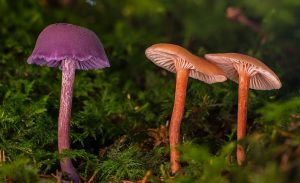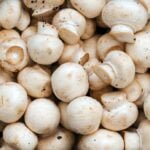Oyster Mushroom Growing Temperature

The excellent oyster mushroom rising temperature will depend on two elements: humidity and temperature. The humidity stage needs to be round 80% and the temperature needs to be between 16 to twenty levels. Once each of those elements are constant, the oysters ought to kind. It is a good suggestion to frivolously mist the pins to take care of humidity.
Oyster mushroom rising season
Oyster mushroom rising temperature can differ relying on the species. For instance, blue gray oysters want a temperature of 10 0C, whereas pink oysters require a temperature of 180 0C. However, there are just a few tricks to maintain the temperature constant. You ought to warmth the substrate in three-minute intervals, and examine the oyster mushrooms day-after-day to verify they don’t seem to be dropping spores.
Oyster mushrooms begin as spores and develop into single-celled strands known as “hyphae” when the situations are proper. These strands comprise half of the fungus’ genetic info. Hyphae then merge collectively to kind the mycelium. This mycelium grows throughout the substrate, consuming vitamins alongside the way in which. Once mature, it may be harvested. However, it’s best to word that the ripeness of the mushroom may be very delicate to temperature.
The temperature of the room is essential as effectively. It needs to be between 20 and 25 levels Celsius. The relative humidity can also be important, because it prevents the mushrooms from drying out and permits them to absorb water. You must also make sure you use water-penetrating baggage or pillows circumstances.
Oyster mushrooms grow greatest in a darkish, sheltered space. Direct daylight can injury the mushrooms. The greatest option to begin growing oyster mushrooms is by shopping for a equipment. It will prevent money and time, and you will have the next likelihood of success than different mushroom varieties. Oyster mushrooms can be found in dozens of sorts, so be sure you select one acceptable to your local weather and rising situations.
Oyster mushroom rising temperature can differ broadly from selection to selection. It’s greatest to take care of a temperature between 75degF and 80degF. A temperature of greater than 100degF will lead to spawn dying. If you are not sure concerning the temperature, attempt transferring the buckets to a cooler location.
Substrate used to develop oyster mushrooms
The kind of substrate used to grow oyster mushrooms has a major influence on yield. One research discovered that the very best substrate for this mushroom was a cellulose-rich natural substrate, with a low lignin content material. On the opposite hand, a substrate that was wealthy in lignin decreased the cellulose exercise whereas rising the enzyme exercise.
Oyster mushrooms can grow on a variety of substrates, together with wooden pellets, straw, sawdust, cardboard, espresso grounds, and agricultural byproducts. Among these, wooden pellets are the simplest to acquire, since they’re already sterilized and want solely water to hydrate. However, in case you are on the lookout for the simplest substrate for growing oyster mushrooms, straw is a superb selection. It’s cheap, straightforward to make use of, and comparatively forgiving.
Substrate used for rising oyster mushrooms needs to be sterilized earlier than use. This prevents competing species from invading the substrate. If a competing species invades your substrate, it could actually forestall oyster mushroom mycelium from growing. This could be a drawback, even when the substrate is sterilized appropriately.
Another essential function of the substrate is its dimension. Generally, 100 kilograms (220 kilos) of substrate will comprise about 30-60 kilograms of dry materials. It’s advisable to make use of smaller straw or wooden chips, as bigger items will result in slower decomposition and fruitbodies.
Substrate used to develop oyster mushrooms is available in lots of tropical and subtropical areas. Most of those lignocellulosic substrates are left to rot or burned. The cultivation of oyster mushrooms on SD additionally has environmental advantages, because it reduces using wooded land.
Ideal temperature vary to develop oyster mushrooms
If you wish to develop oyster mushrooms, you will want to know their superb temperature vary. Some varieties thrive in hotter climates, whereas others favor colder ones. Blue oyster mushrooms, for instance, are greatest grown in colder climates and require temperatures round 45 to 65 levels Fahrenheit to fruit. They additionally favor loads of recent air and may be grown outside.
You ought to maintain the substrate moist and aerate it twice a day to encourage fruiting. You must also be sure that the mushroom substrate is correctly ventilated, because it requires moisture to develop. The superb temperature vary to develop oyster mushrooms will depend on the kind of strains you select and the dimensions of the substrate. Once you have established the appropriate temperature vary, it’s best to be capable to begin harvesting oyster mushrooms in two to 4 weeks. Depending on the dimensions and quantity of mushroom spawn you are utilizing, you might be able to produce 5 or 6 harvests in a single season.
While oyster mushrooms are identified to develop naturally in wooden, they can be grown in sawdust, straw, and cardboard. The hottest substrate for rising oyster mushrooms is straw, however you may experiment with different choices as effectively. Other frequent substrates embody cardboard, sawdust pellets, espresso grounds, and agricultural byproducts. Wood pellets are particularly straightforward to supply, since they’re already pasteurized and solely want water to hydrate them. Straw can also be very forgiving and is a perfect substrate for oyster mushrooms. Regardless of what substrate you select, it is very important comply with the directions to keep away from any issues.
After your substrate is prepared, it’s best to put together it for inoculation. Several strategies of pasteurisation can be found, however the most straightforward methodology entails submerging the substrate in scorching water for a few hours. Once you have executed this, you may place your substrate in a plastic bag and tie it up with string.
Symptoms of poor progress
Symptoms of poor oyster mushroom progress embody the looks of slimy, dry, or yellow caps. These are all indicators that your oyster mushrooms usually are not getting sufficient humidity, so it’s best to make sure that to maintain them in an space that has at the very least 80-95% humidity. If attainable, attempt rising them within the rest room, as that is normally the warmest room in the home with oblique, filtered gentle. You can even spray the cap with a advantageous mist of water to dry it out, however keep away from spraying it straight onto the mushroom, as this may trigger it to yellow.
The proper mixture of humidity and lightweight is crucial for the expansion of oyster mushrooms. Fresh air can also be essential, and so they develop greatest in heat, well-ventilated areas. However, sustaining ample humidity may be troublesome. If the humidity is simply too low, the pins might not kind correctly, and they’re going to dry out and crumble.
Oyster mushrooms comprise ergothioneine, which acts as an antioxidant and prevents systemic irritation. It can also cut back the formation of plaques within the arteries, which contribute to heart problems. Oyster mushrooms are additionally secure for pregnant girls, and comprise essential vitamins corresponding to riboflavin, potassium, folic acid, and pantothenic acid.
In the research, totally different carbon sources have been used, corresponding to sugarcane residue, coconut shell fiber, and corn straw. These carbon sources have been added to the oyster mushroom mycelium to judge the extent to which the substrates are suitable for mushroom progress. During the experiment, these substrates have been supplemented with 1% sugar and 9% rice bran. The oyster mushrooms have been then inoculated with these mycelium discs and incubated at 28°C.
Some of the commonest signs of poor oyster mushroom progress embody a moist slimy pores and skin and a darker colour. You should prepare dinner them if they’re nonetheless edible, however it’s best to discard them if they’re too slimy to eat. Once they’ve turned slimy, you may attempt to revive their progress for just a few days earlier than discarding them. As with some other crop, it is very important fastidiously management the setting. An improper setting can result in severe setbacks and even complete failure.
Inoculation methodology
One of the very best methods to lift oyster mushrooms is by inoculating them with grain. This is finished by putting a small quantity of nutrient agar powder in a cup of unpolluted water. Heat this combination for a minute. Once it boils, take away it from the warmth and wrap it in aluminum foil. Next, place the cup in a strain cooker set to fifteen psi for half-hour. Once executed, transfer the bag to a clear room.
In one research, oyster mushrooms have been grown utilizing sugarcane residue, coconut shell fiber, corn cob, acasia sawdust, blended sawdust, and cow manure. These substrates have been supplemented with 9% rice bran, 1% sugar, and a nutrient. In addition to the substrate, the oyster mushrooms have been inoculated with one-cm-diameter mycelium discs.
Once inoculated, oyster mushrooms may be grown on quite a lot of substrates, together with hardwood and supplemented sawdust, paper, and occasional grounds. Many species of oyster mushrooms may be bought commercially. Prices vary from $5 to $10 per pound. Be certain to examine the delivery situations to your oyster mushroom spawn earlier than buying.
After you have inoculated your mycelium, you may want to attend seven to 21 days to see fruiting. During this time, oyster mushrooms will produce their first spores and mycelium, which is able to unfold all through the develop bag. During this time, the substrate needs to be cool sufficient to permit them to develop.
When rising oyster mushrooms, it is essential to understand that their progress will depend upon the temperature and humidity situations. When the substrate is simply too dry, the mushrooms won’t produce as a lot as they need to. Another essential side to think about is the vitamins that the mushrooms require.




